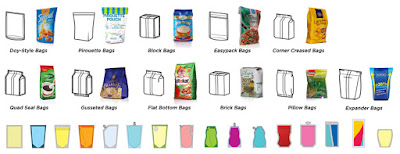For every type of business, the packaging is one of the most considerable factors. Their profit, image, recognition, and re-selling ratio depends on the boxing. Especially when it comes to frozen meals, we cannot ignore the importance of sturdy and reliable packaging. The frozen food demands a high level of safety and the material that withstands the cold temperature. As a businessman, you should select the appropriate packaging system that lies in your budget boundaries.
As a packaging supplier,
we usually get some queries regarding the best packaging for frozen food;
therefore, we will discuss a few types of it.
A Few Essential Elements for Frozen Food
Packaging
Below are some essential elements that are necessary for the frozen meals packaging:
- Protection from the food smell.
- Protection from the spoilage of meals.
- No off coloring.
- The filling of food and the sealing of packaging should be easy.
- Managing and storing the packets should be easy.
- Strong material.
- It can prevent the food from moist.
- The packaging made of FDA food-grade substrate.
- The packaging can protect the food inside it at low temperatures.
- It can resist oil, water, and grease.
What are Different Types of Packaging for
Frozen Food?
The following are different types of packaging for frozen meals:
- Shrink Film
- Cardboard
- Wax Coated Cardboard
- Glass
- Aluminum
- Flexible Bags
- Lidding Films
- High barrier thermoforming film
- IQF polyethylene
- Skin film
Shrink Films
Shrink films are
plastic-based packaging. Manufacturers have used three main ingredients for the
shrink films, these are polyethylene, polyolefin, and poly-vinyl-chloride.
Many famous food brands
across the globe use the shrink film packaging for the frozen items. These are
popular and the most used packaging types. These are the best choice of food
companies because the polyolefin shrink films are FDA food-safe approved
materials. They have protected sealing, best for pies, pizzas, cakes, baked
confectionery, vegetables, and fruits.
Cardboard
Cardboard packaging is
another most used and famous material across the globe. For many frozen foods,
companies used these boxes for packagings, such as pizza, pies, cakes, and
vegetables. When it comes to shipping, they are reliable, sturdy, and easy
handling across the country. Moreover, they have an aesthetic appearance,
vibrant colors, unique graphics, and stylish printing. They are usually used
for advertising purposes.
Wax Coated Cardboard
Wax coated cardboard packaging
is famous for frozen meals, the foods that containers need heating. For Chinese
food, companies usually use wax-coated cardboard packing.
The best part of the
wax-coated packaging is they are heat resistant packs; therefore, you can
directly put them into the microwave. Moreover, they have heat-resistant trays,
you can use for the same purpose.
Glass
Glass containers are
another famous (not as much famous in America) type of frozen food packaging.
these are popular in Asian countries to store pickles, jams, and juices.
In the USA, companies
used glass food containers to store the unused portions of meals.
Aluminum
This is another
packaging for frozen meals. Aluminum foil pans have used to pack the lasagna,
manicotti, Salisbury steaks, and some other types of frozen eatables.
The top aluminum foils
featured with cardboard boxes and sealed with shrinks films.
After removing the
shrink film and cardboard covering, you can directly put the aluminum into the
microwave and heat the meal.
Flexible Bags
These are flexible
packaging made for frozen foods. The flexible bags are pouches made of
food-grade plastics, foils, and some other safe materials.
Lidding Films
This is another plastic
film packaging. The lidding film used to make lids and covers for different
types of frozen meals. Moreover, they are FDA approved and food-grade
materials. These are printable and customizable packaging materials.
High Barrier Thermoforming Film
It is a type of flexible
food packaging with an amazing thermoformability feature. The high barrier film
has made from cutting edge plastic resins. They have thick corners and strength
to protect the frozen meal.
IQF Polyethylene
It can protect the
frozen meals and freeze the food quickly.
Skin Film
The skin films used for
the packing of trout, salmon, and other frozen seafood.







